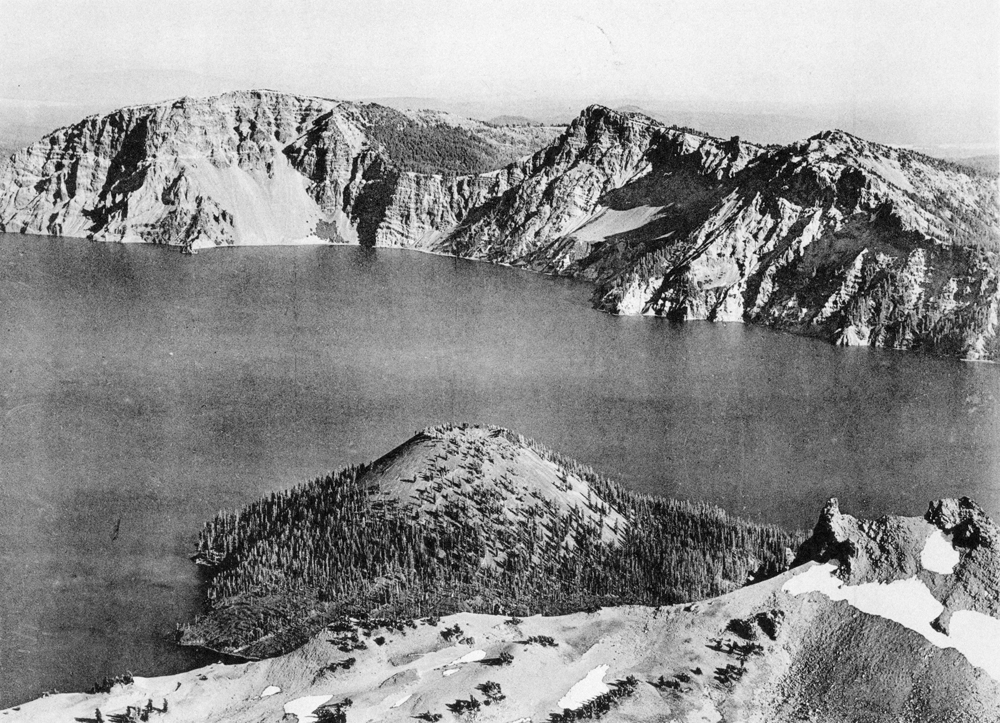The Geology of Crater Lake National Park, Oregon With a reconnaissance of the Cascade Range southward to Mount Shasta by Howell Williams
The Glaciation of Mount Mazama
Evidence of Glaciation Outside the Caldera
The Sun Creek Glacier
The canyon of Sun Creek is the most imposing glacial trough on the slopes of Mount Mazama. Where it is truncated by the rim of the caldera it has a perfect U-shaped section (plate 31). Its floor is approximately 5/4 mile across, and the tops of the opposing cliffs are 3/4 mile apart.
|
Plate 31. The southeast wall of Crater Lake. From left to right: Dutton Cliff; Sun Notch; Applegate and Garfield peaks with the Chaski slide at their base; head of Munson Valley. Wizard Island in foreground. (Photograph by U. S. Army Air Corps.) |
At the time of maximum glaciation, ice spread across Vidae Ridge, and the Annie Creek and Sun Creek glaciers were continuous. Similarly the divide between Sun Creek and Kerr Valley-Dutton and Grayback ridges-was then concealed. Evidence for this is to be seen in the presence of bouldery drift covering the slopes south of Dutton Cliff. Even the top of 6122 Hill on Grayback Ridge is plastered with drift. Therefore, the ice in Sun Creek canyon, opposite the hill, must once have been approximately 1000 feet thick.
In the lower part of Sun Creek canyon, the traces of the former glacier are almost completely buried by thick deposits of pumice. But about a mile inside the south boundary of the park, on the west wall of the canyon, a well defined bench, approximately 60 feet above the bottom, marks the contact between the pumice and the underlying moraines. Exposures of drift are few and poor, but the presence of marshy ground and the abundance of glacial boulders are ample proof of the existence of recessional moraines.
At an elevation of 5900 feet, the walls of Sun Creek canyon consist principally of glacial drift, considerably reworked and mixed with pumice. This hybrid deposit continues upstream for a mile, at which point the floor of the valley is interrupted by cliffs of lava. From the top of these to the rim of the caldera, 1 1/2 miles higher, the valley is covered with hummocky moraines. At lower elevations these are veneered with pumice, but upward the sprinkle of pumice gradually disappears until in the last 1/2 mile the moraines are bare. Presumably, therefore, the Sun Creek glacier was still in existence, though a small relic, when the final eruptions began. The ice, which had once been almost 1000 feet thick as it passed through Sun Notch, was then no more than 100 or 200 feet thick.
***previous*** — ***next***


